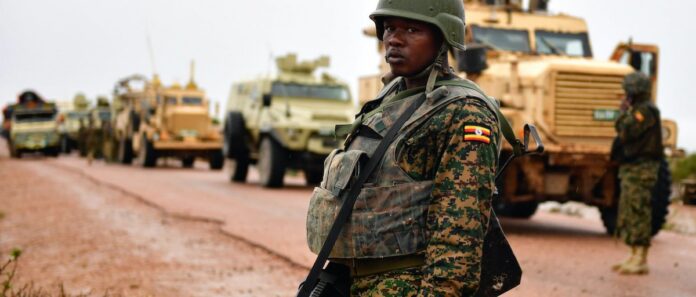Barawe – Troops from the African Union Transition Mission in Somalia (ATMIS) and the Somali Security Forces have stepped up joint patrols in the Barawe district in South West State to thwart attacks by the Al-Shabaab terror group.
The Commander for Battle Group 38 from ATMIS Uganda People’s Defence Forces (UPDF) based in Barawe, Col. Christopher Berochan, says the joint patrols would provide both proactive and reactive responses to activities threatening peace and security in the Lower Shabelle region.
“We have redoubled our efforts in joint operations with Somali Security Forces (SSF) to combat threats posed by Al-Shabaab in Barawe and its environs,” said Col. Berochan.
He assured residents of the African Union troops’ continued support and emphasising that the battle group will continue working jointly with the SSF.
“We want to assure all in the district that ATMIS is working jointly with the SSF around the clock to maintain peace and security in the district,” said Col. Berochan.
Located 210 km southwest of the capital, Mogadishu, Barawe functions as the main port of South West State and is one of ATMIS’ is within ATMIS Area of Responsibility.
Col. Berochan reiterated that teamwork would be critical in ensuring Barawe district remains safe to allow residents to continue with their normal lives.
His remarks were echoed by Barawe District Commissioner, Omar Sheikh Abdi Shafana, who stressed that AU troops and SSF must remain vigilant to thwart any planned attacks by the terror group.
“The importance of these patrols is to foil Al-Shabaab’s planned attacks and we are determined to maintain the tempo and ensure that it doesn’t happen in Barawe,” said the District Commissioner who also participated in the joint patrols.
The Barawe district has been peaceful since 2014 when it was liberated from Al- Shabaab who used the coastal town as a launching pad for terrorist activities in Mogadishu and other major towns.
ATMIS and SSF have in recent times stepped up patrols after intelligence reports revealed heightened Al-Shabaab activities in the Lower Shabelle region.
Source: ATMIS





